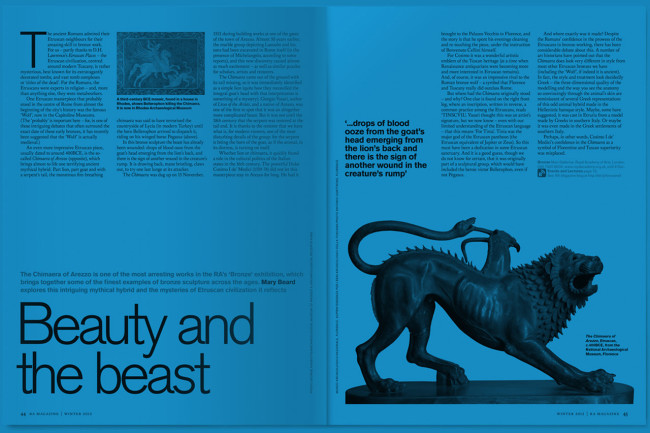Preview: Lynette Yiadom-Boakye at the Serpentine
Preview: Lynette Yiadom-Boakye at the Serpentine
By Kelly Grovier
Published 21 May 2015
The imagined portraits by this RA Schools alumna and Turner Prize nominee are revelations from another world, says Kelly Grovier.
-
From the Summer 2015 issue of RA Magazine, issued quarterly to Friends of the RA.
Lynette Yiadom-Boakye wants to help you see. Before settling on a career as an artist, the London-born painter contemplated becoming an optician instead. What changed her mind? “I had to rule out optics,” she once admitted to an interviewer, “because science was a problem.”
One may be surprised to discover that painting should be considered an option for someone who had decided to “rule out optics.” After all, don’t art and ophthalmology share an obligation to measure the strength of our vision? But Yiadom-Boakye isn’t like other painters. The art she makes is far less dependent on the perception of the visual world than might be expected from a genius of contemporary portraiture. Indeed, her paintings are the product of an astonishing impatience and a remarkable resistance to what the poet William Wordsworth called the “tyranny” of the eye.
If “impatience” seems harsh (Yiadom-Boakye confesses to having “a short attention span”), consider the remarkable fact that she rarely works on a painting for longer than a single day. Nor does she spend the least division of an hour studying the faces of her sitters. Why? Because there aren’t any. She makes them up. No one poses for a Yiadom-Boakye portrait. She magics them, their personalities and the realms that they inhabit from the air of her capacious imagination. So contrary is her methodology, which defies conventional assumptions about the temperament and techniques of portraiture, she dares us to locate her alluring work within the genre at all.
-
No one poses for a Yiadom- Boakye portrait. She magics them, their personalities and the realms they inhabit from the air of her capacious imagination
-

Lynette Yiadom-Boakye, No Place for Nature, 2011.
Courtesy Corvi-Mora, London and Jack Shainman Gallery, New York.
-
By relying on her mind’s eye for the conjuring of countenance and physique, the Royal Academy Schools alumna audaciously does away altogether with the elements of imitation and semblance from the practice of portraiture, requiring us to rethink our terms entirely. In doing so, she excavates a hidden resonance within the term portrait, which stares back to the Latin protrahere (meaning “to draw forward, to reveal”). The faces she draws forward from the darkened ground of her canvases are not deft translations from flesh to paint, but revelations from another world.
The vision that her work helps us sharpen is one that prioritises insight over sight. To stare into the eyes of a Yiadom-Boakye portrait is to witness a slow dragging forth, from earthy ochres and siennas, umbers and onyx, a figure that did not dutifully stand still for a short session in a studio, but one whose presence has been gradually looming for centuries. Compressed into the timeless ambience in which the 2013 Turner Prize nominee’s subjects alternately pose, pirouette and turn their backs on us is a profound understanding of the restrained colour that characterises the paintings of Edgar Degas, Édouard Manet and Walter Sickert RA – artists whose disposition Yiadom-Boakye’s palette echoes.
While Degas, Manet and Sickert may be important forebears tonally, in a deeper sense Yiadom-Boakye’s work weaves before us an “unfather’d vapour” (to borrow another phrase from Wordsworth): an eternalising veil for which there is no obvious or adequate art historical antecedent. The dearth of black portraiture in the Western visual canon is a void from which Yiadom-Boakye must sculpt her fictional countenances. Invariably of dark complexion, the fabricated subjects of Yiadom-Boakye’s art assume the heroic burden of establishing ex nihilo the very bloodline in which they are to figure. The result is a body of work that transcends both tradition and the traumas of racial struggle. An exhibition of her work grinds a corrective lens, bringing into focus the rich history of an aesthetic elsewhere that never was but will now forever be.
Immortal Souls is at the Serpentine Gallery from 2 June – 13 September 2015.
Kelly Grovier writes for the Times Literary Supplement and is author of 100 Works of Art That Will Define Our Age (Thames & Hudson, 2013).
-
-
Enjoyed this article?
Become a Friend to receive RA Magazine
As well as free entry to all of our exhibitions, Friends of the RA enjoy one of Britain’s most respected art magazines, delivered directly to your door.
Why not join the club?

-





